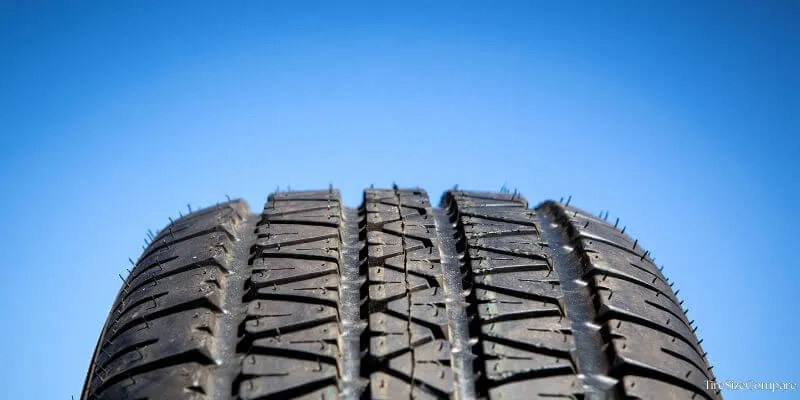32×12.50r20 in Metric
 Choosing the right tires for your vehicle can be overwhelming, especially when you’re faced with both imperial and metric measurements.
Choosing the right tires for your vehicle can be overwhelming, especially when you’re faced with both imperial and metric measurements.
Have you ever wondered how to determine the metric equivalent of a tire size like 32×12.50R20? The closest metric equivalent is a 305/50R20, and understanding why can make all the difference in ensuring optimal performance and safety.
We’ll dive into why this is the closest match, how to convert between imperial and metric sizes, and some useful alternatives and expert observations to help you make an informed choice.
Understanding Tire Size
The imperial tire size notation 32×12.50R20 might look confusing at first, but it’s relatively simple to understand once broken down into its individual components:
- Overall Diameter: The first number, 32, represents the overall diameter of the tire in inches.
- Tire Width: The second number, 12.50, refers to the tire’s width in inches.
- Construction Type: The letter “R” stands for radial construction, which is the most common type for modern tires.
- Rim Diameter: The last number, 20, indicates the diameter of the rim in inches that the tire is designed to fit.
Understanding each of these components helps you determine if a tire is suitable for your vehicle in terms of fitment, performance, and compatibility.

Closest Metric Equivalent
The closest metric equivalent to a 32×12.50R20 tire is the 305/50R20. Here’s why:
- Conversion Process: To find the metric equivalent, you need to convert the width and diameter from inches to millimeters. A 12.50-inch width converts to approximately 318 mm, but the standardized metric equivalent is 305 mm, which is closest in the available sizes.
- Aspect Ratio: The aspect ratio of the metric size is crucial in maintaining the overall diameter. The 305/50R20 tire has a 50% aspect ratio, which ensures that the overall diameter remains similar to 32 inches. This means it offers a comparable ride height and maintains speedometer accuracy.
- Practical Implications: The metric size 305/50R20 is practically equivalent to 32×12.50R20 because the dimensions are close enough to maintain handling, ride comfort, and speedometer calibration. This similarity ensures you won’t need significant modifications to your vehicle, making the transition smooth.

Alternatives to This Size
While the 305/50R20 is the closest metric equivalent to the 32×12.50R20, there are some other metric sizes that could serve as substitutes. Here are a few alternatives along with their dimensions and characteristics:
| Metric Size | Overall Diameter | Notes |
|---|---|---|
| 315/50R20 | 32.4 | Slightly wider, similar overall diameter |
| 325/50R20 | 32.8 | Wider, may require minor modifications |
These alternatives may be suitable if you’re seeking different performance characteristics or a particular aesthetic.
For instance, a wider tire like the 325/50R20 might offer better traction and a more aggressive look but could also require modifications to avoid rubbing on the wheel well.
32×12.50R20 Equivalent
The closest metric equivalent to a 32×12.50R20 tire is the 305/50R20. This metric size maintains similar width and overall diameter, ensuring comparable ride quality and compatibility without requiring modifications.

How Tall is a 32×12.50R20 Tire?
A 32×12.50R20 tire has an overall height of 32 inches. This height impacts the vehicle’s ground clearance, ride comfort, and overall driving dynamics.
How Wide is a 32×12.50R20 Tire?
The width of a 32×12.50R20 tire is 12.50 inches. This width provides a substantial contact patch, which improves traction and stability, especially on off-road surfaces.
What Size Rim Fits a 32×12.50R20?
A 32×12.50R20 tire is designed to fit a 20-inch rim. Ensuring the correct rim size is crucial for proper tire seating and safe vehicle operation.
Our Observation
After reviewing the 32×12.50R20 tire and its metric equivalent, the 305/50R20 stands out as the optimal choice for those looking to replace the imperial size.
This metric tire maintains an almost identical overall diameter and width, preserving vehicle dynamics and ensuring safety. Additionally, the slight adjustment in width means there’s minimal risk of rubbing or clearance issues, making it a practical choice.
However, it’s always a good idea to consult a tire professional to ensure the replacement tire meets all requirements for load and speed ratings for your specific vehicle.
Selecting the right tire size is an important decision that can impact your vehicle’s safety, performance, and comfort. Understanding both imperial and metric sizes can help you make an informed choice that best fits your needs.



